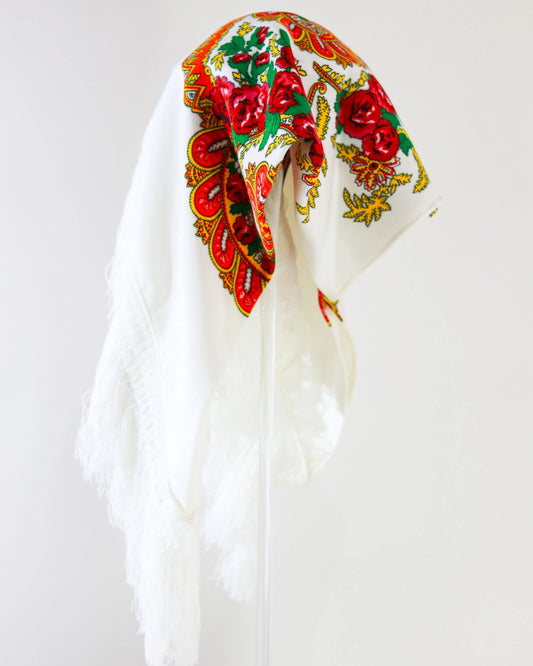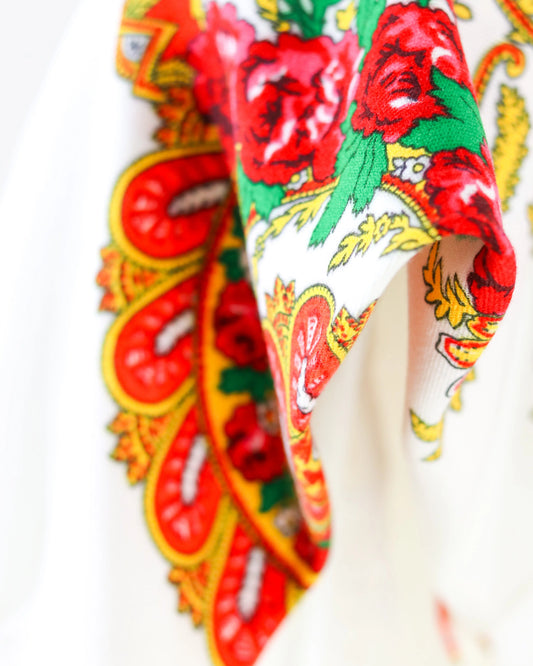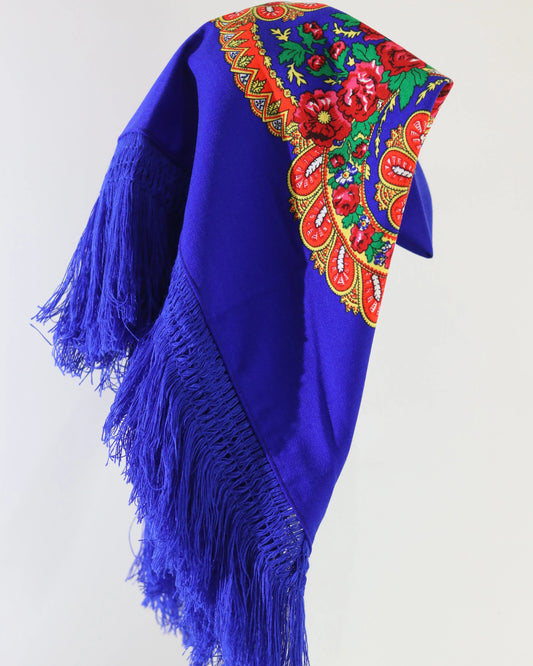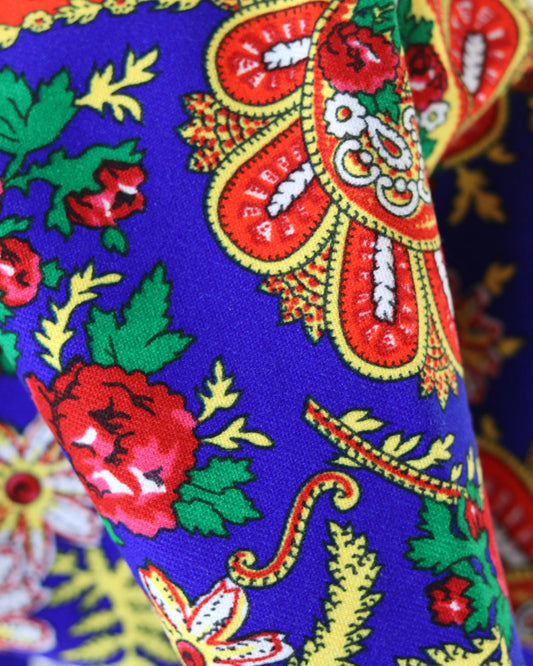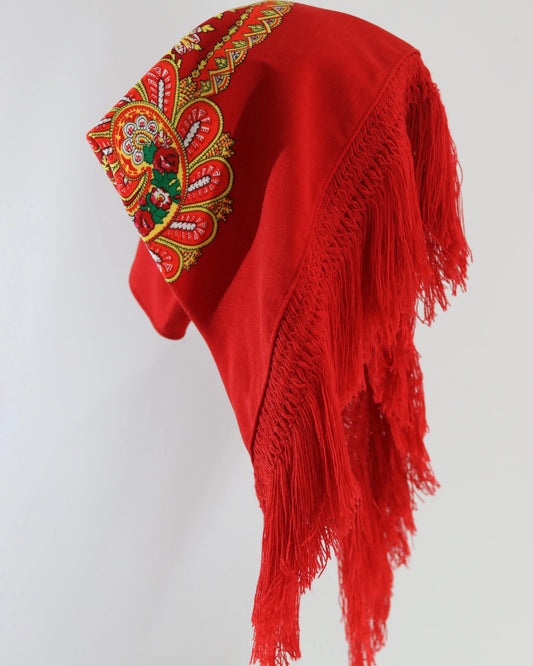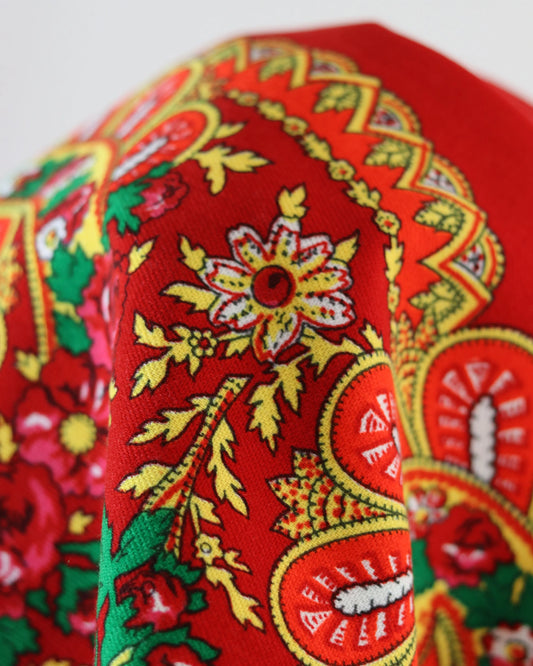The tradition and songs that keep the soul of Minho alive
Minho sings before it speaks. Those who grow up there learn early that one melody leads to another, that a chorus tingles the dance, and that the sung word is not adornment but a tool for life. From the corn cob to the Lima River, from the streets of Braga to the banks of Valença, there are voices that glue the community together in a single web. And these songs, passed from mouth to mouth, preserve memories, stories, and ways of being.
When a trend rises in chorus, the conversation changes cadence. Hands clap in time, skirts twirl, scarves catch the wind. It's not nostalgia. It's common practice. Songs from Minho don't live in museums. They live at the table, on pilgrimages, at work, and in courtship. And that's why they endure.
What makes a song Minhota?
A Minho song is recognizable by its swing, its witty wit, and the clarity of its lyrics. The stanzas are direct, rhyming, often in redondilha maior. They speak of agriculture, the river, saints, longing, and the pride of dancing better than the neighbor from the next parish.
There's almost always a call and response. A voice opens, the choir repeats, the accordion flourishes overhead, the braguesa holds the floor. Humor frequently appears, as does improvisation, especially when there's a challenge between singers.
And there's always a chorus that the whole village knows:
Turn, turn, my love,
on the Lima bridge of course,
who dances without being hot
don't get kissed in the face.
A verse like this says little and yet says everything. It sets the pace, calls for dancing, and winks. Live, it gains substance through friction with the audience.
Genres and dances that light up the terreiro
There are names that outsiders learn quickly, because they're repeated on posters, at festivals, and in conversations. And each one brings their own way of singing.
- Turn Minhoto
- Chula
- Malhão
- Green sugarcane
- Watering can
- Desgarrada and singing to the challenge
- Work and cycle songs, from the husking to the Janeiras
Turn
The Vira is a major feature. Its ternary meter, its tempo invites whirling. Unlike a waltz, the accent has a different weight, requiring a leap, a wide circle. The text is light, repetitive, designed so the melody never stops. It's processional music, show music. It's often seen in the São João festivals in Braga or the Feiras Novas in Ponte de Lima.
Chula
Chula lives in a binary system, requiring a harder tap dance, and bringing a healthy mischief to the words. The singing can alternate between soloist and chorus, and the accordion allows for variations. A good chula singer knows how to gauge the audience and sharpen the rhythm at the right time.
Malhão
Malhão strikes a curious balance between catchy melody and thumping rhythm. Many are familiar with the traditional chorus, but in Minho, there are versions and responses that change little and say a lot. It's the ideal format for a good-natured challenge, where rhymes are exchanged like chili peppers.
Green cane and Regadinho
Music more closely tied to dance, with its own unique steps. The cane-verde (green cane) calls for a shuffle, the regadinho (watering) calls for steady partners. The lyrics are simple, but the rhythm reigns supreme. When the bass drum kicks in and the chorus swells, no shoe can stay still.
Desgarrada and singing to the challenge
Improvisation rules here. Two or more singers rhyme, poke fun at each other, praise the land, and play with the audience. The accordion holds the tone and paves the way. It's an art that demands ear, speed, and a good memory of old verses. The audience recognizes the best responses. They react, laugh, and shout to the rhythm of the little irons.
Work and cycle corners
Minho always sang while farming. During the flax harvest, during the harvest, during the corn husking, during the July harvests. Each task had songs adjusted to the cadence of the body. There are also the songs of the year's cycle: Janeiras and Reis, the litanies of the pilgrimages, the Easter songs that intersect sacred and popular. Hearing an entire house singing the Janeiras, with cavaquinho and tambourine, is like feeling a village that recognizes itself.
A framework to guide the ear
| Gender | Compass | Progress | Typical instruments | Living context |
|---|---|---|---|---|
| Turn | 3/4 | Medium to live | Concertina, viola braguesa, cavaquinho, bass drum | Rusgas, Feiras Novas, pilgrimages |
| Chula | 2/4 | Average | Concertina, tambourine, irons, snare drum | Festivals, bars, halls |
| Malhão | 2/4 | Alive | Concertina, braguesa, cavaquinho, bass drum | Challenges, summer dances |
| Green sugarcane | 2/4 | Average | Braguesa, cavaquinho, tambourine | Circle dances at parties |
| Watering can | 2/4 | Medium to live | Concertina, irons, bass drum | Ranch meetings |
| Torn apart | Free | Variable | Concertina, Braguesa | Taverns, contests, parties |
| Work corners | Free or adapted | As per the task | Voices, tambourine, irons | Fields, threshing floors, granaries |
Instruments that give body to the sound
The accordion is queen, of course. Its tremolo fills the arena, summons peers, sustains the challenge. In Minho, it has become a symbol, as present as the red scarf and gold beads.
The viola braguesa provides the backbone. Traditional tuning, a rasgueado that marks the dance, and a punch that holds the harmony. The cavaquinho, higher-pitched and livelier, adds sparkle and makes the chorus jump.
The percussion is simple and precise. A bass drum thumping, a snare drum thumping, a tambourine thumping, and small irons keeping the clock ticking. There's a violin in some groups, an accordion in others, and sometimes a bagpipe brings Minho closer to neighboring Galicia.
Small practical notes for those who play:
- Vira asks for wide accents in the first half.
- Chula gains grace with accordion cuts between verses.
- In the challenge, the instrumentalist reads the singer and leaves space for the word to boil.
- Ferrinhos and tambourines don't cover, they articulate. Less is more.
The Minho year sung month by month
There's a calendar of sounds that organizes collective life. From the doorstep to the street, each month has its favorite song.
| Month | Party or moment | Songs and dances | Striking sounds |
|---|---|---|---|
| January | January and King's Day | Corners from door to door | Cavaquinho, tambourine, choir |
| March | Lent | Litanies and hymns | A cappella voices, restrained steps |
| April | Paschal compass | Visiting songs | Home choirs, bells |
| May | Mayans and spring pilgrimages | Chulas and malhões | Light concertina, sweet braguesa |
| June | Popular saints | Turn, water, ruckus | Bass drum, snare drum, fire and singing |
| August | Our Lady of Agony, big parties | Turn, green cane, challenges | Concertina plena, street choir |
| September | Harvest | Work corners | Voices from the field, choruses of encouragement |
| November | Magusto | Malhões and children's songs | Tambourine, irons, laughter |
Anyone who passes through Viana in August understands the meaning of a river of people singing. In Braga, the São João festivities are steeped in tradition and youthful energy. In Ponte de Lima, the Feiras Novas are showcases of costumes, dances, and songs, with the Braguesa smiling everywhere.
Who keeps and who reinvents
- Folklore groups: they collect folk songs, rigorously rehearse steps, and preserve costumes and gestures. They are living schools, with children, grandparents, and rehearsers who learn the history of the parish through the music they play.
- Accordion players: They hold regular meetings in several municipalities. These meetings involve sharing melodies, tunings, tricks, and verses.
- Craftsmen: They build braguesas, tambourines, and cavaquinhos. They adjust wood, fine-tune timbres, and perpetuate manual skills.
- Informal groups: neighbors who gather at the tavern, families who sing Janeiras, friends who liven up the church square. No poster, no stage, but with a repertoire at their fingertips.
- Schools and cultural associations: promote instrument workshops, traditional dance classes, and singing clubs.
There are also young musicians who bring these styles to new contexts. Some record live versions with simple microphones and share them online. Others combine braguesa with electric guitars, mixing malhão with urban rhythms. When there's respect for the lyrics, the swing, and the chorus, the song grows. It becomes new without losing its roots.
How to learn and pass it on
- Listen to collection records, especially old recordings from villages and pilgrimages. This gives you insight into tempo and diction.
- Look for someone in your area who knows. A rehearsal director, a tambourine player, an experienced singer. Direct transmission is worth several books.
- Practice the choir. Singing along is the heart of these styles. Practice entrances, exits, and simple harmonies.
- Learn two or three basic chords on the concertina or braguesa. Even if you don't play on stage, you'll understand the dance's breathing.
- Go to parties. Viana, Braga, Ponte de Lima, Ponte da Barca, Arcos. The terreiro is the best teacher.
Resource suggestions:
- Public Sound Archive with traditional collections.
- Historical documentary programs by Michel Giacometti and Lopes-Graça.
- Local ethnography and costume museums, with music-related programming.
- Municipal libraries with songbooks.
Technical anatomy of a Minho fashion
For those who like to look inside, some lines help guide the ear.
- Typical structure: quatrain A, chorus response, quatrain B, response, strong chorus repeated.
- Meter: redondilha maior very present, simple rhyme ABAB or ABCB.
- Harmony: Many themes in major mode with circles I IV V. For example, in G major, GCD with passing variations. In other contexts, the Mixolydian mode adds flavor to certain harmonica-driven melodies.
- Rhythm: Vira in 3/4 with a firm accent on the first beat. Chula and malhão in 2/4, with room for tap dancing and tambourine swing.
- Ornamentation: accordion embroidering between phrases, cavaquinho playing dry rasgueados, braguesa sustaining alternating bass notes.
Stage tricks:
- Let the chorus breathe. The audience will come in stronger if there's a beat of silence beforehand.
- Avoid always playing in the same register. Gradual increases in intensity make the party grow.
- Use the choir's response to adjust the tempo. If the choir is late, ease up on the accordion with your right hand and pull with the bass drum.
Quick guide to setting up a raid
- Get a rhythmic core: bass drum, snare drum, irons.
- Add a safe accordion and a braguesa. Cavaquinho will adorn.
- Define 6 to 8 styles: Vira, Chula, Malhão, a green cane, a watering can, two challenge blocks, a corner of Janeiras out of season for a surprise.
- Prepare a catchy chorus for each theme. Practice choir entrances.
- Plan two improvised verses with the singers. Practice discreet change signals.
- Rehearse basic steps. The audience follows better when they see a steady foot and a ready smile.
- Plan the dynamics: start medium, rise in the third theme, peak in the penultimate one, close with Vira that everyone recognizes.
Fabric and gold: the costume that also sings
Anyone who has seen a Minas Gerais ranch knows that sound can be seen. The striped skirts, the embroidered aprons, the colorful scarves, the heart of Viana shining in the chest. The clothing is not mere adornment. It speaks of office, parish, and celebration. Some learn the steps from the gesture of the skirt, the tapping of the clogs. The sound of the fabrics swirling together with the irons becomes part of the scene.
Two scenes that stick in your mind
An August afternoon in Viana. In the churchyard, the procession hasn't even turned the corner yet, and the accordion calls out. A young man picks up the bass drum, the grandmother adjusts her handkerchief, and hums the verse of the old Vira. As the band passes, the local choir creates a second song over it. The saint receives flowers, the street receives dancing.
On a winter Sunday in Ponte da Barca, a crowded tavern. Two singers exchange malhãos between bites. One provokes the other with a hurried rhyme, and the room responds with applause in the second half. The host raises his glass to signal a pause. A brief silence, followed by a general smile. The tambourine returns, the malhão returns. And the laughter returns.
The porous borders of the North
The proximity to Galicia created sound bridges. Common rhythms and styles, bagpipe passages, and broad chants. Those who cross the Minho River understand without translation. Picardy verses are understood through gestures, and circle dancing doesn't require a passport. This ancient tradition enriches the local practice without erasing each side's distinctive accent.
Collection, archiving and sharing
Minho has been recorded by ethnographers, local radio stations, and generous amateurs. These recordings help to establish lyrics, tempos, and ways of speaking. There are accessible archives with interviews, sessions in two-story houses, and beats from decades ago. They are compasses for those seeking stylistic fidelity, and also seeds for new versions.
Recording today is simple. A cell phone captures rehearsals, parties, and gatherings. Sharing with good context, mentioning the locals, the trending names, and the singers, is a form of respect. When credit is given, a chain of recognition is created that fuels the practice.
Flat irons to compose new courts
- Use images of the land: river, threshing floor, flax, corn, bridge, sea of Viana.
- Avoid rimbraçal and difficult locks. The court thrives on oral input.
- Make it rhyme cleanly. ABAB or ABCB usually works.
- Leave room for a response. In a challenge, the best quatrain is the one that asks for another.
Simple example:
Oh Lima river that carries you away
boats of light in the moonlight,
bring back who sings for me
so I can dance.
It serves as an opening, is clear, and gives space for the chorus. And it fits perfectly in a Vira, a calm malhão, or even a medium-tempo chula.
What changes and what doesn't change
There are professional stages, themed festivals, and studio recordings. There are also bars, churchyards, and streets. What changes is the sound of the microphone, the speed with which a trend spreads around the world, the blending of new languages. What doesn't change is the need to sing along, to respond to those who call, to connect words and bodies.
In a time when so much is consumed alone, a Vira circle is an antidote. The rhythm cannot be fulfilled without the other. The verse has no effect without a response. The chorus only gains momentum when everyone joins in. It may start shyly, it may sound out of step. It always ends with laughter, sweaty feet, and a desire for more.
The songs of Minho don't ask for permission. They appear where life is thriving. And as long as there's an accordion at hand and two verses ready, the soul of this land remains alight. Those who pass by and sing leave a part of themselves. Those who stay and listen gain strength for the next day's work. It's simple and profound, like the beating of a bass drum in the center of the chest.

